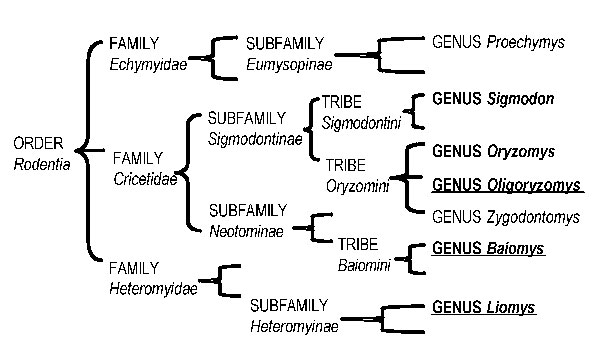Volume 15, Number 4—April 2009
Research
Experimental Infection of Potential Reservoir Hosts with Venezuelan Equine Encephalitis Virus, Mexico
Figure 3

Figure 3. Relatedness of 7 wild rodent genera that have been experimentally evaluated for suitability as amplifying hosts in enzootic transmission cycles of Venezuelan equine encephalitis virus. The 5 genera included in this study are presented in boldface; the 3 novel genera are underlined.
Page created: December 10, 2010
Page updated: December 10, 2010
Page reviewed: December 10, 2010
The conclusions, findings, and opinions expressed by authors contributing to this journal do not necessarily reflect the official position of the U.S. Department of Health and Human Services, the Public Health Service, the Centers for Disease Control and Prevention, or the authors' affiliated institutions. Use of trade names is for identification only and does not imply endorsement by any of the groups named above.